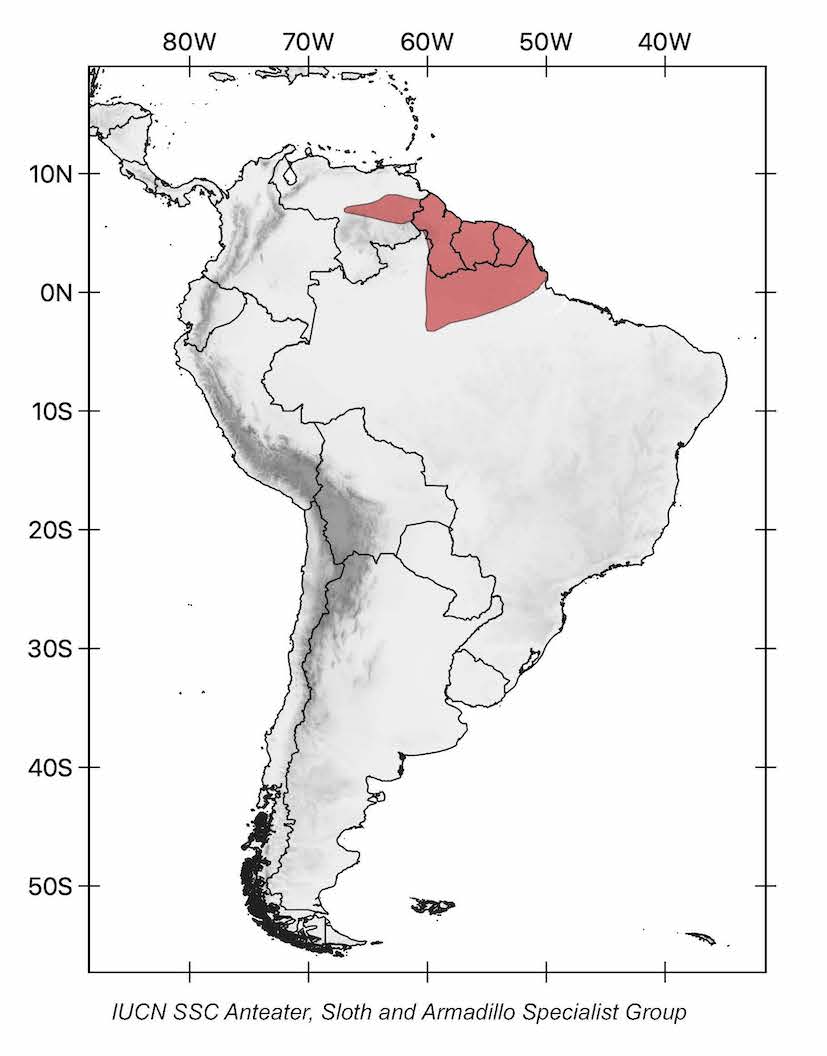Pale-throated three-toed sloth
(Bradypus tridactylus)
other common names
Pale-throated sloth
Pale-throated three-fingered sloth
Taxonomy
Order: Pilosa
Family: Bradypodidae


description
The pale-throated three-toed sloth has a head-body length of 45–75 cm and a small, vestigial tail of 2–11 cm. It weighs 3.4–6.5 kg. Adult sloths have long, coarse, dark grey hair with black spots on shoulders, back, and haunches. The head and throat are yellowish. The fur can appear greenish due to algae growing on it. Males are smaller than females and can be distinguished by their dorsal orange-yellow patch (called speculum) with a broad black central line.

range
Bradypus tridactylus occurs in the Guyana Shield region, from eastern Venezuela (east and south of the Orinoco river) into northern Brazil (south to the Amazonas/Solimões), through to Guyana, Suriname and French Guiana. It does not occur south of the Amazon river.

HaBITAT and ECOLOGy
Bradypus tridactylus is found in tropical forests with diverse tree species. It also occurs in the swamp and marsh forests immediately adjacent to mangroves. It has been recorded on tepuis (table-top mountains).
Pale-throated three-toed sloths are strictly arboreal and restricted to forests. This species seems to be abundant throughout its distribution. Population density estimates vary from 1.7 animals per km² in French Guiana to 221 animals per km² in Manaus, Brazil. At least 130 individuals were found in an isolated forest fragment of 0.07 km² during a recent rescue in the city of Paramaribo, Suriname.

diet
This is a strict folivore that consumes leaves from the canopy of overstory trees. Its diet consists mainly of leaves of Cecropia trees.

Population trend
Decreasing.

reproduction
Both males and females reach reproductive age at three to six years. Reproduction is seasonal. A single offspring is born after a gestation of six months. Births occur during the rainy season in March–June. The young become independent at around 5 months of age, but remain closely associated with their mother for the first year of life.

curious facts
Bradypus tridactylus has one of the slowest rates of digestion due to its low metabolic rate and because the leaves it eats must be fermented in its gut. Like other sloths, it climbs down to the ground to defecate and urinate every 4–7 days.
The pale-throated three-toed sloth swims well and can use rivers as corridors to reach other areas of the forest.

threats

conservation status
Bradypus tridactylus is listed as Least Concern in view of its wide distribution. The species is affected by habitat loss due to deforestation resulting from land use change and urban sprawl. However, it is unlikely to be declining fast enough to qualify for listing in a threatened category, as deforestation rates are not as high as in other parts of the Amazon. A re-assessment will be necessary if rates of deforestation increase within its range.